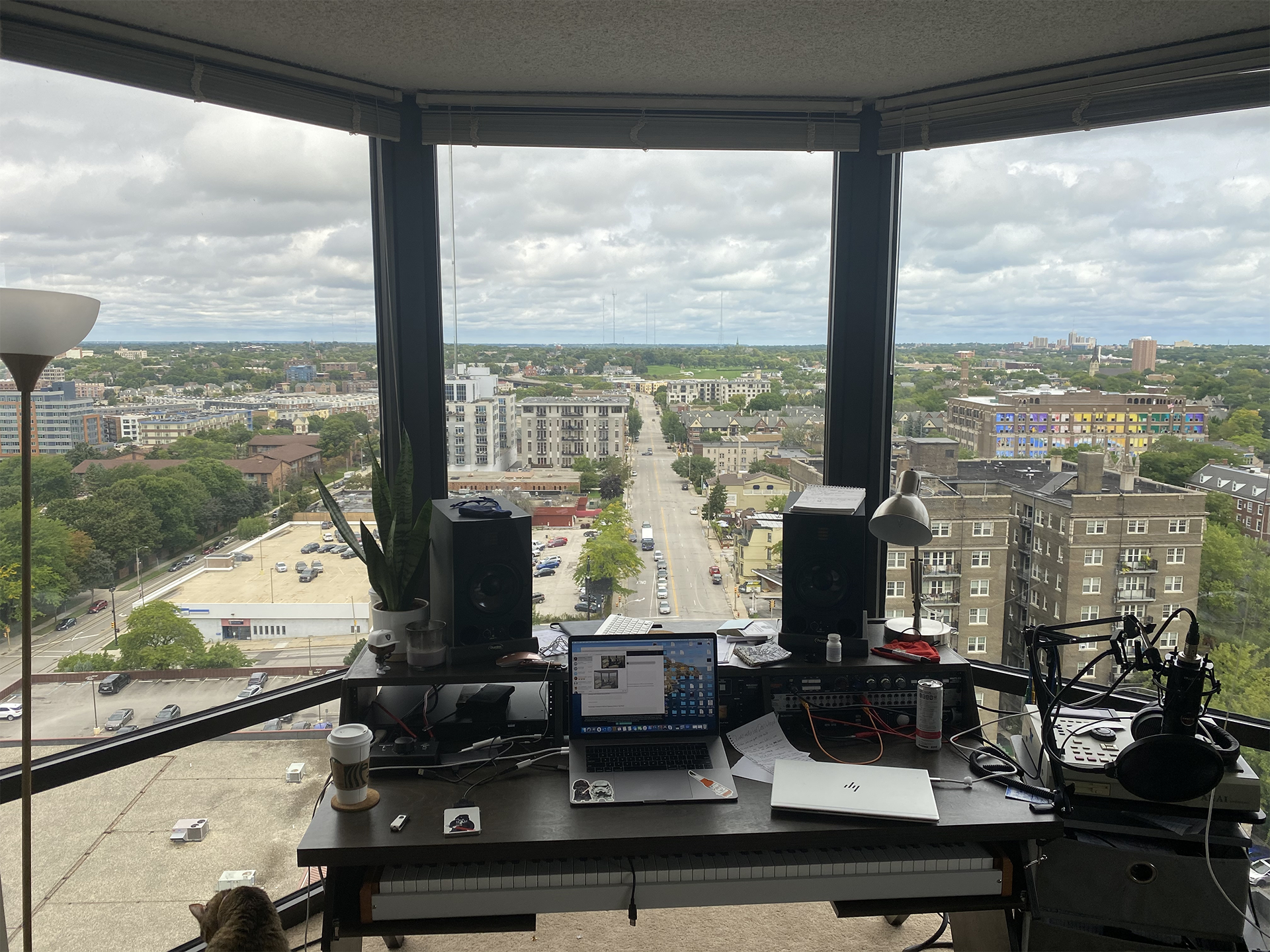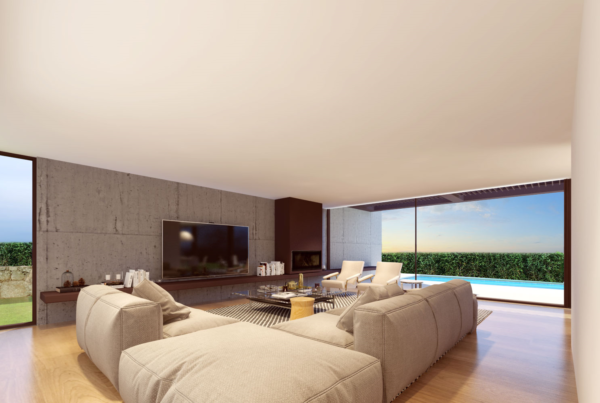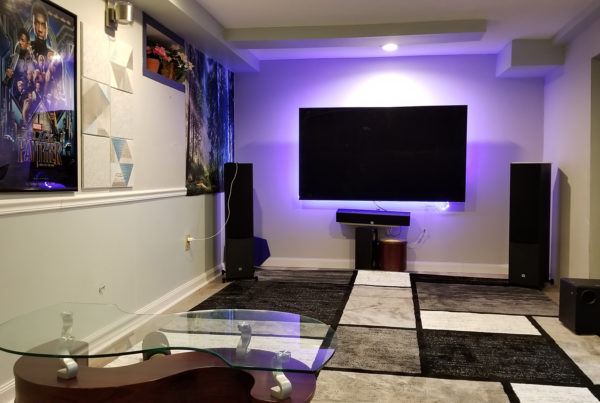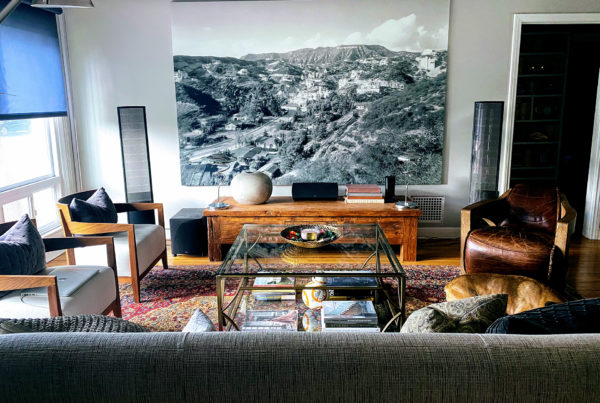Our room forms on our web site are designed to perform two functions. First, they provide information regarding your room dimensions and the usage of your room. You can attach up to four photos on the form. The photos allow us to see what is going on within your room. They allow us to see the surface areas and what they are made of so we can see what type of acoustical issues we must treat. Secondly, we see what space is available for treatment types. In our small rooms, we have low-frequency issues along with middle and high frequency reflections and reverberation times to calculate. Both of these issues require space to treat along each wall and space on the wall for placement of absorption and diffusion technologies. Once you fill out the information in the form, you are instructed to set a time to speak with an engineer regarding your room acoustical issues Let’s take a look at some of the photos that were sent in in some of our room forms and discuss the pros and cons of set up, room usage, and the treatment chosen to address the acoustic issues.
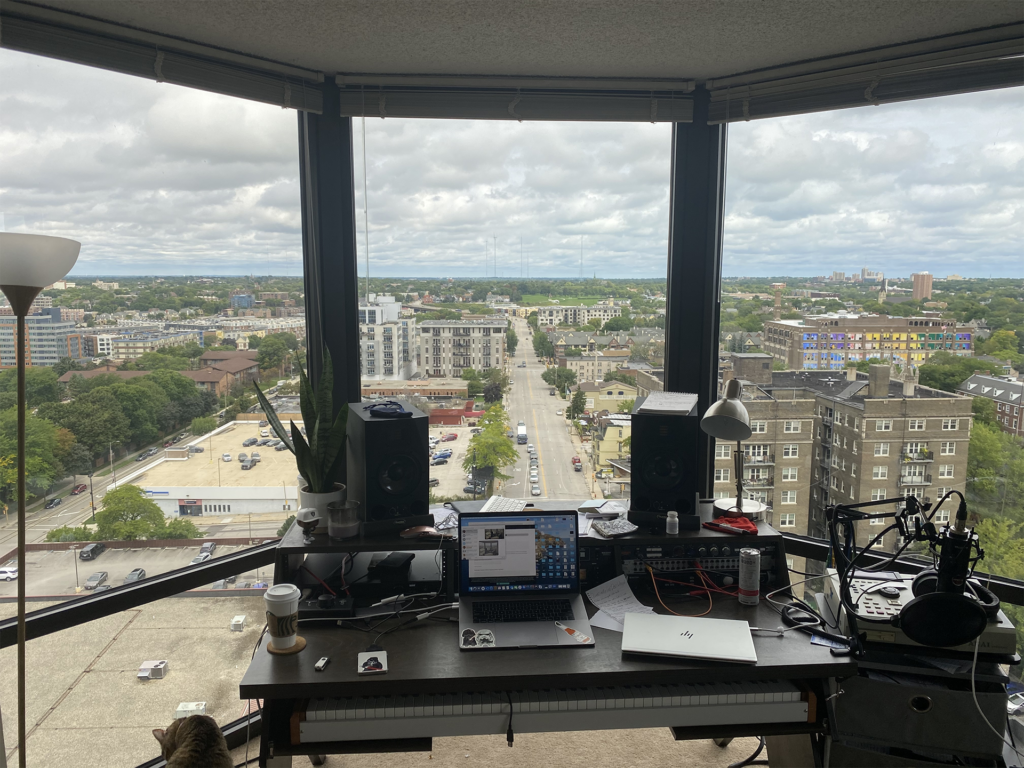
In the photo above we see a common set up mistake. The front wall behind the speakers is glass. Glass is the worst surface area that you can have when it comes to critical audio listening. The reflections from glass produce negative impacts on frequency response especially in the middle and high frequencies. Sound takes on the characteristics of the surface areas it strikes. Glass is hard and brittle and that is how your voice and music will sound. It will sound harsh and it will produce listener fatigue over time. Notice the blinds that will cover the windows. They appear to be made out of a metallic substance which will only add to the reflection issues along with creating a harsh and brittle sounding mid range. This mid range area is especially critical since this is where our vocals lie. Any harshness in this area is immediately recognized by our hearing processes and over time will produce listener fatigue. When treating the reflections from your critical listening wall surfaces, you must choose a technology that has the proper rates and levels of absorption for music and voice.
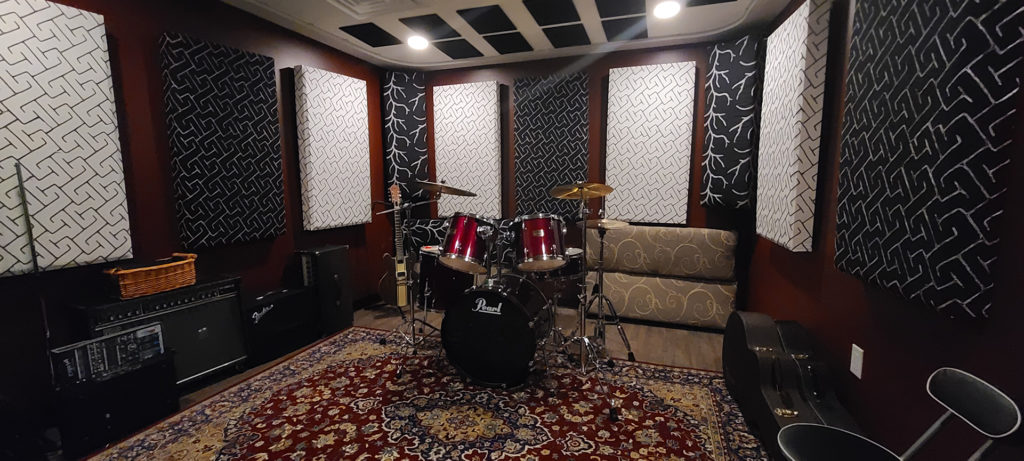
In the photo above, we have what is termed a “live” room. A live room is a room in which instruments are played and recorded. Notice the instruments that are in the room. We have electric guitars with amplifiers along with drums. Electric guitars and drums are full range instruments that produce low-frequency energy that is too long for this small room to handle. This lower frequency energy when it doesn’t fit will produce distortion within the room in the form of room modes. Room modes can exaggerate some octave bands and completely hide others so you will hear too much of one sound and not enough of others. We can manage this excess low-frequency energy within our rooms by using the correct treatment types that have the necessary rates and levels of absorption to treat the frequency and amplitudes of the issues. However, the client has chosen the wrong treatment types. They have chosen to use boxes that are filled with building insulation. Building insulation was designed to keep your room warm or cool. It was never designed as an acoustic tool. This material type will never be able to absorb enough low-frequency energy from an electric guitar amplifier. Only diaphragmatic absorption will have the necessary “horsepower” to treat this room. With drums, we can place much needed low-frequency absorption in the platform that the drum sits upon.
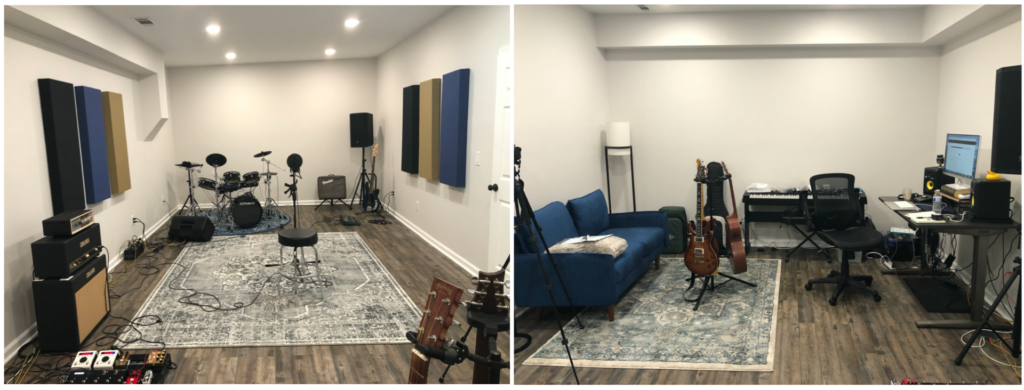
In this live room photo, we have similar sources. We have drums and guitars that produce full range energy that will not fit into our small rooms. In this room, we have no treatment for middle and high frequency reverberation time issues and we have no low-frequency treatment. We have discussed the impact on our sound quality when it comes to low-frequencies. The next issues that small rooms produce is reverberation. Reverberation is how long a sound stays around within the room after it has been spoken or played. It is produced by the numerous reflections from the wall surface areas. Reverberation times are easy to treat with open celled acoustic foam. You must choose a foam that has the proper rates and levels of absorption for music and voice. Most foams in the marketplace are designed for noise where the design objective is to absorb as much energy per square foot as possible. Music and voice do not require that rate and level of absorption. Music and voice are different from noise. Care must be taken in the absorption design parameters when it comes to music and voice to avoid excess absorption which renders the music and voice lifeless and dead. Our Studio Pro Foam was designed specifically to deal with music and voice.
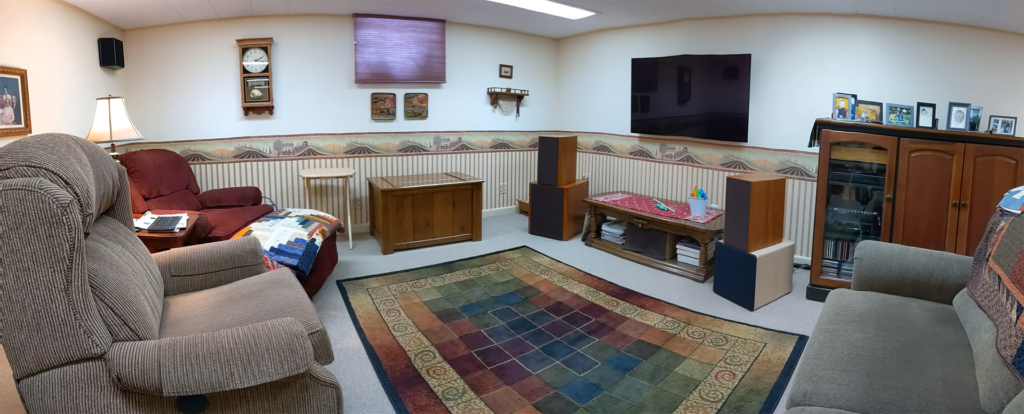
We see a common set up mistake with two channel set ups in this photo. First, there is too much clutter within the room. The left and right channels have many objects close to them. Sidewall reflections and the distances from the speakers to the sidewalls must be free of any clutter or objects. There must be “free space” for the reflections from sidewalls to move across the room and combine with the direct energy from our speakers. Room clutter produces spurious reflections off of the objects within our rooms. Producing a strong center image relies on having no objects that interfere with the energy from our speakers. We must keep the area between our speakers and the area on both sides of our speakers free from clutter of any type. Keep the area from speaker to sidewall, the area between the speakers, and the area from speakers to listening positions free of clutter and objects. Even though we can not see sound, it must have the ability to travel freely from speakers to your ears. If it strikes objects along the way, you are hearing distortion.
LINKS:
Free Room Analysis: https://www.acousticfields.com/free-room-analysis/
Diaphragmatic Absorption: https://www.acousticfields.com/product/acda-10-studio/
Drum Platform: https://www.acousticfields.com/product/drum-platform/
Acoustic Foam: https://www.acousticfields.com/product/acoustic-foam/
Reverberation Times: https://en.wikipedia.org/wiki/Reverberation#:~:text=A%20reverberation%2C%20or%20reverb%2C%20is,furniture%2C%20people%2C%20and%20air.
https://www.definitions.net/definition/live+room
About Us At Acoustic Fields: https://www.acousticfields.com/about/


